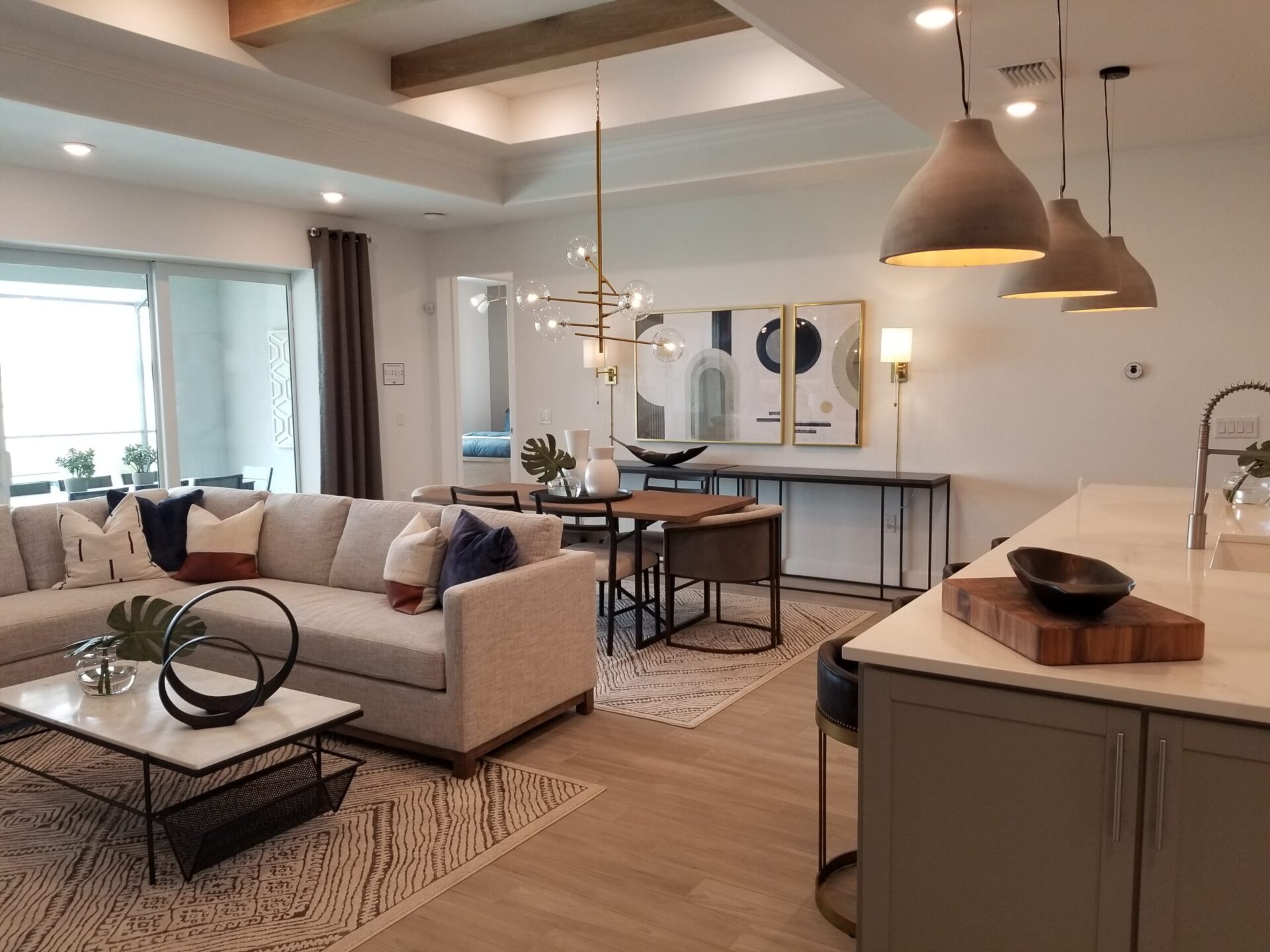In the real estate market, a well-presented home can be the decisive factor in a successful sale. For many homeowners, this raises a crucial question: Should I stage or decorate my home before listing it? Although these terms are often used interchangeably, they represent fundamentally different approaches to preparing a home for sale. Understanding the nuances between staging and decorating can significantly influence both the saleability and the selling price of your property. This article will elucidate the distinctions between the two, explore the role of staging in marketing your home, and offer insights into which approach might be most appropriate for your situation.
What Is Home Staging?
Staging is a strategic marketing tool used to present a property in its best light. It involves selectively arranging furnishings and décor to highlight a home’s strongest assets while minimizing its weaknesses. The ultimate goal is to make the property appealing to the broadest range of potential buyers. This is achieved by creating a neutral environment that enables people to envision the space as their own.
Key Components of Home Staging
- De-Personalization: Staging often involves removing personal items like photographs, religious symbols, and niche artwork, making it easier for buyers to imagine living in the space.
- Neutral Color Palette: A neutral backdrop appeals to a wider audience. Whites, grays, and beige tones create a clean, inviting atmosphere.
- Space Optimization: Staging aims to maximize the perception of space. Clutter is eliminated, furniture is scaled appropriately, and rooms are set up to showcase their functional purpose.
- Highlighting Features: Special characteristics of the home, such as a fireplace or a spacious kitchen, are emphasized to attract buyer attention.
- Psychological Triggers: The space is set up to evoke warm emotions, often through the use of lighting, soft textiles, and subtle decorative elements like flowers or candles.
What Is Home Decorating?
In contrast, home decorating is the expression of an individual’s personal style and preferences in their living space. Decorating is not targeted at a broad audience but is a way to create an environment that reflects the homeowner’s tastes, lifestyle, and aspirations.
Key Components of Home Decorating
- Personalization: Decorating is characterized by the inclusion of personal touches like family photos, favorite colors, and cherished possessions.
- Style Specific: Whether it’s modern, traditional, bohemian, or country, decorating styles are tailored to the homeowner’s preference.
- Functionality for the Resident: Unlike staging, which aims to please potential buyers, decorating focuses on the comfort and needs of the current inhabitants.
- Long-term Investment: People often invest in quality furniture, artwork, and accessories they love, expecting to enjoy them over a period of years.
- Emotional Connection: Homeowners typically form emotional attachments to their décor choices, as these elements contribute to the atmosphere and identity of the home.
Staging: A Marketing Imperative
Staging is not just about making a home “look nice”—it is a strategic marketing tool. When buyers walk into a staged home, they should immediately be able to envision living there. This emotional connection can significantly accelerate the decision-making process. Additionally, staging helps in:
- Competitive Edge: In a crowded market, a well-staged home stands out. It is more likely to be featured in marketing materials and to draw traffic through online listings.
- Higher Sale Price: According to the National Association of Realtors, staged homes sell for 6% to 25% more than homes that aren’t staged.
- Faster Sale: A staged home often sells more quickly than an unstaged or poorly presented one, minimizing the costs and stresses associated with a prolonged sale period.
- Professional Photography: High-quality photos of a staged home are more effective in online listings, increasing the likelihood of viewings and, by extension, offers.
- Appeal to Online Audience: In today’s digital age, the first “showing” is often online. A staged home creates a powerful first impression that can translate into more in-person visits.
When to Stage and When to Decorate?
The choice between staging and decorating often depends on your immediate goals. If you are preparing to sell your home, staging is generally the best approach. It depersonalizes the space and makes it appealing to a broad audience, potentially resulting in a faster sale at a higher price point. However, if you plan on living in your home for several years and want to create an atmosphere that resonates with you personally, decorating is the way to go.
Staging and decorating serve different purposes but are both vital in the context of homeownership. While decorating provides an avenue for personal expression and long-term comfort, staging acts as a sophisticated marketing tool designed to appeal to a wide range of potential buyers. Knowing when and how to leverage each approach can significantly impact the saleability and value of your home, making an informed choice essential for any homeowner navigating the real estate market.


